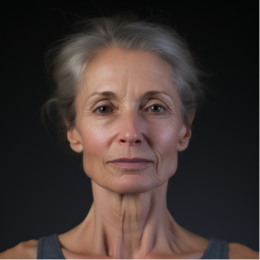How Is Parkinson’s Disease Diagnosed? (All You Need to Know)

We thought you might like these, too:
- Parkinson’s Diet: What to Know
- Parkinson’s Disease Found to Have a Clear Genetic Signature
- Caring for Someone with Parkinson’s Disease
- AHA News: These Three Risk Factors May Have the Biggest Impact on Dementia Cases
Parkinson’s disease, a neurodegenerative disorder, has long puzzled the medical community. With no definitive test available, diagnosing this condition requires a meticulous assessment of symptoms, medical history, and other factors. This article delves deep into how is Parkinson’s disease diagnosed, shedding light on the complexities and advancements in the field.
Understanding Parkinson’s Disease
At its core, Parkinson’s disease results from the degeneration of dopamine-producing neurons in the brain. This leads to a cascade of motor and non-motor symptoms that can drastically affect an individual’s quality of life.
Clinical Assessment
Role of Healthcare Professionals
Neurologists, trained extensively in the intricacies of the nervous system, are the primary professionals involved in diagnosing Parkinson’s. Their expertise allows them to discern subtle differences between Parkinson’s and other neurodegenerative conditions. Additionally, they collaborate with other specialists, such as physical therapists and occupational therapists, to gain a comprehensive understanding of a patient’s condition.
Patient History and Symptom Assessment
A meticulous review of the patient’s medical history is the foundation of the diagnostic process. This includes understanding the onset and progression of symptoms, family history of neurological disorders, and any potential exposure to environmental toxins. Common symptoms like resting tremor, rigidity, and bradykinesia are often the first indicators, but non-motor symptoms like sleep disturbances, mood changes, and gastrointestinal issues are also considered.
Physical Examination
During this phase, the neurologist conducts a series of tests to evaluate motor functions, including muscle tone, reflexes, balance, and coordination. They may also assess facial expressions, speech patterns, and handwriting, as changes in these can be indicative of Parkinson’s.
Differential Diagnosis
A differential diagnosis is essential, given the myriad of conditions with overlapping symptoms. This process involves ruling out other potential conditions, such as essential tremor, multiple system atrophy, or drug-induced parkinsonism.
Diagnostic Criteria
While there isn’t a singular definitive test for Parkinson’s, a set of criteria has been established to aid in diagnosis. Historically, the U.K.’s Parkinson’s Disease Society Brain Bank criteria were widely used. However, with advancements in understanding the disease, the International Parkinson and Movement Disorder Society introduced a more comprehensive set of criteria. This new set encompasses a broader range of symptoms and stages, allowing for a more nuanced diagnosis.

Imaging and Laboratory Tests
Role of Imaging Techniques
While traditional imaging techniques like MRI and CT scans can’t diagnose Parkinson’s, they help rule out other conditions. The DaTscan, however, offers a more targeted approach by providing images of the brain’s dopamine system, aiding in the diagnostic process.
Cerebrospinal Fluid Analysis
The cerebrospinal fluid, which bathes the brain and spinal cord, can offer insights into the disease. The presence of alpha-synuclein clumps in this fluid is being researched as a potential diagnostic marker.
Blood Tests and Biomarkers
While blood tests alone can’t diagnose Parkinson’s, they can highlight abnormalities or deficiencies that might be contributing to symptoms. Additionally, ongoing research is exploring specific biomarkers in the blood that could indicate the presence of Parkinson’s.
Quick Poll
Importance of Patient Input
Patient-Reported Symptoms
A patient’s firsthand account of their experiences is invaluable. These personal insights can sometimes highlight symptoms that might be overlooked in a clinical setting.
Diary Keeping and Symptom Tracking
By maintaining a daily record of symptoms, patients can offer a detailed account of the disease’s progression, response to medications, and any potential triggers or patterns.
How Patient Input Aids in Diagnosis
Combining clinical assessments with patient-reported symptoms ensures a holistic understanding. This comprehensive approach can lead to a more accurate diagnosis and personalized treatment plans.
Challenges in Diagnosis
Variability in Symptom Presentation
The diverse range of symptoms and their varying intensities can make Parkinson’s challenging to diagnose. Two patients might present entirely different sets of symptoms, adding to the complexity.
Misdiagnosis and Its Consequences
The overlapping symptoms with other conditions can lead to misdiagnosis. This not only delays appropriate treatment but can also expose patients to unnecessary medications and their side effects.
Importance of a Multidisciplinary Approach
Given the multifaceted nature of Parkinson’s, a team approach involving neurologists, physical therapists, psychologists, and other specialists ensures comprehensive care and minimizes the risk of misdiagnosis.
Future Trends in Diagnosis
Advancements in Diagnostic Technology
Emerging technologies, such as advanced imaging techniques and wearable devices that track movement patterns, promise to refine the diagnostic process.
Early Detection Methods and Their Potential Impact
Recognizing early or prodromal symptoms can pave the way for timely interventions, potentially slowing the disease’s progression.
Personalized Medicine and Tailored Treatment Plans
With the rise of genomics and personalized medicine, future treatments might be tailored to individual genetic profiles, maximizing therapeutic outcomes and minimizing side effects.
Personal Story: Sarah’s Journey Through Uncertainty
Sarah, a spirited teacher, first noticed her hand tremor while grading papers. Months of medical consultations and tests culminated in a Parkinson’s diagnosis. Her story underscores the emotional and physical toll of the diagnostic journey, serving as a beacon of hope and resilience for others.
Conclusion
The intricate process of diagnosing Parkinson’s disease underscores the need for continuous research and collaboration among medical professionals. As our understanding deepens, there’s hope for more accurate, timely, and patient-centered diagnostic approaches.
HAVE YOU OR SOMEONE YOU KNOW FACED CHALLENGES IN GETTING A DEFINITIVE DIAGNOSIS FOR A MEDICAL CONDITION? SHARE YOUR STORY.





